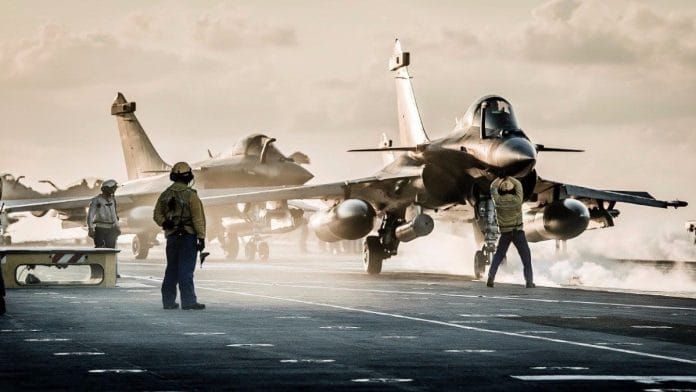New Delhi: With its mega project to acquire 26 Rafale Marine fighters getting the greenlight, the Indian Navy is setting up a team along with the defence ministry to negotiate the terms and conditions of the deal which is likely to cost over 5 billion Euros (Rs 45,000 crore), ThePrint has learnt.
Sources in the defence and security establishment said that the negotiating team will be led by a senior Naval officer while the French side will be led by its defence ministry.
The two sides will negotiate on the price and other terms of purchase after taking into account all relevant aspects, they added.
Incidentally, the French Navy only operates the Rafale Marine.
There are India-specific requirements that will also be discussed and firmed up between the two sides.
Furthermore, integration of Indian designed equipment and establishment of Maintenance, Repair & Operations (MRO) hub for various systems will be incorporated into the contract documents after due negotiations.
As reported earlier by ThePrint, a formal deal will only be signed after the new government is sworn in next year because the whole process will take that much time.
Ahead of Prime Minister Narendra Modi’s visit to France last week, Defence Minister Rajnath Singh-led Defence Acquisition Council (DAC) had given the nod to the Naval project which will include the procurement of 22 Rafale Marine and 4 trainer aircraft for the indigenous aircraft carrier INS Vikrant.
The proposed Rafale Marine deal was not part of the joint statement issued by India and France after Modi’s meeting with French President Emmanuel Macron. In his media interaction, Modi, however, did make a passing reference to cooperate with naval fighters.
France has emerged as a major defence partner for India with cooperation reaching from submarines to space. According to a report by the Sweden-based Stockholm International Peace Research Institute (SIPRI), France displaced the US to become the second-largest supplier of arms to India between 2018 and 2022 — an increase of 489 per cent compared to the 2013–17 period.
(Edited by Tony Rai)






